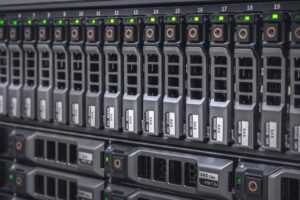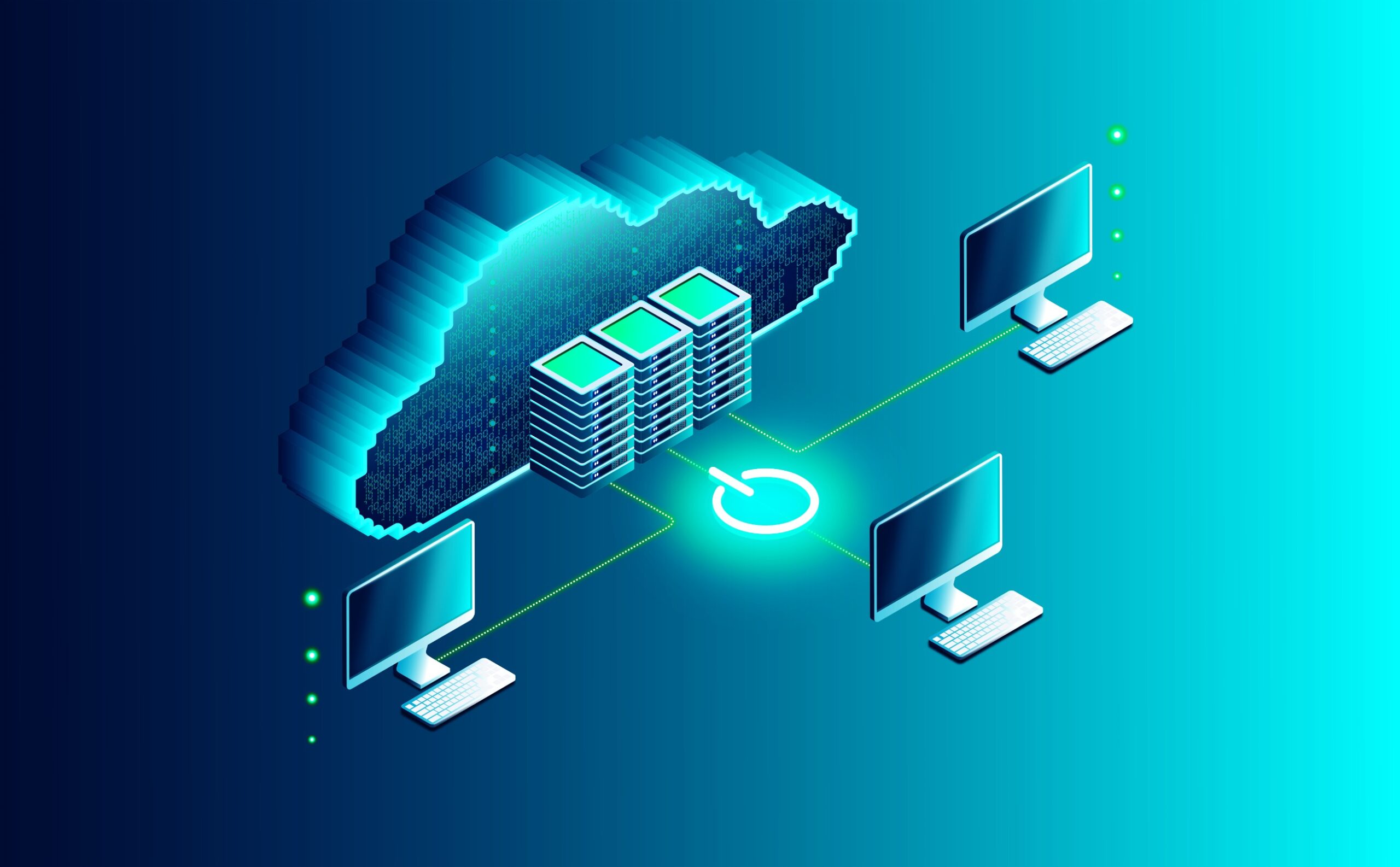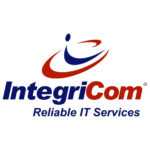Table of Contents
- Introduction
- What are the different types of Cloud vs. On-Premise Solutions?
- What is the main difference between cloud and on-premise?
- What is Cloud Computing in Simple Terms?
- What are some examples of cloud computing services or cloud data solutions?
- What are some examples of cloud computing services or cloud data solutions?
- What are the main benefits of cloud computing (or cloud data solutions)?
- What are the disadvantages of cloud computing (or cloud data solutions)?
- What are On-Premise Data or Computing Systems?
- What are the main benefits of on-premise systems?
- What are the disadvantages of on-premise?
- Why choose on-premise over the cloud?
- Cloud vs On-Premise Comparison Chart (Benefits and Cost)
- How do you decide on-premise or cloud?
- On-Premise vs. Cloud FAQs
- Summary
Introduction
In the ever-evolving landscape of modern business technology, the choice between on-premise and cloud solutions has become a pivotal decision for organizations across various industries. The cloud vs on-premise pros and cons debate has taken center stage as businesses seek to optimize their infrastructure, streamline operations, and achieve competitive advantages. While each option brings its own set of advantages and disadvantages, understanding the key factors involved is essential to making an informed decision that aligns with the specific needs and goals of your business.
What are the different types of Cloud vs. On-Premise Solutions?
Cloud and on-premise solutions refer to different approaches for hosting and managing software applications and data. Most business systems can be either cloud or on-premise. For example, a traditional way of storing and sharing data is with a on-premise server; however, today you are much more likely to see a business utilizing the cloud for data storage and sharing.Companies use what is sometimes called a cloud data warehouse to store their data in a public but secure location hosted by another company, which supports smoother transitions when leveraging cloud migration.Whereas traditionally companies would use their own data center, whether local or in a rented space, to house their own hardware which stores the data.
- This same concept is true for businesses applications. For example, companies could have a cloud or an on-premise ERP system. Basic office applications, like the applications provided by Microsoft 365, can be run locally or in the cloud. When these applications are provided from the cloud, it is called SaaS, which is like IaaS/HaaS but for software vs. hardware. Business phone systems can also be in the cloud or on-premise with most today using a VoIP system in the cloud, benefiting from the advantages described in cloud phone systems. Business security solutions can even be delivered from the cloud today and not just on-premise.
What is the main difference between cloud and on-premise?

The main difference between cloud and on-premise solutions is that cloud solutions utilize servers and infrastructure provided by a third-party provider over the internet, while on-premise solutions involve hosting and managing applications and data within an organization’s own physical infrastructure.
What is Cloud Computing in Simple Terms?
 Cloud computing is the delivery of computing resources, like storage, processing power, and software, over the internet. It allows users to access and use these resources on-demand without the need for local infrastructure. Think of it as accessing and utilizing virtual resources hosted by a third-party provider instead of owning and managing physical hardware. Cloud computing offers scalability, flexibility, and cost-efficiency, enabling individuals and businesses to leverage computing power and services without the complexities of infrastructure management, reflecting why SMB cloud computing is safer and more effective than many assume.
Cloud computing is the delivery of computing resources, like storage, processing power, and software, over the internet. It allows users to access and use these resources on-demand without the need for local infrastructure. Think of it as accessing and utilizing virtual resources hosted by a third-party provider instead of owning and managing physical hardware. Cloud computing offers scalability, flexibility, and cost-efficiency, enabling individuals and businesses to leverage computing power and services without the complexities of infrastructure management, reflecting why SMB cloud computing is safer and more effective than many assume.
What are some examples of cloud computing services or cloud data solutions?
 There are various examples of cloud computing services and cloud data solutions available. Here are a few commonly used ones:
There are various examples of cloud computing services and cloud data solutions available. Here are a few commonly used ones:
- Infrastructure as a Service (IaaS): Providers like Amazon Web Services (AWS) and Microsoft Azure offer virtualized computing resources such as virtual machines, storage, and networking.
- Platform as a Service (PaaS): Services like Google App Engine and Heroku provide platforms and tools for developing, deploying, and managing applications without the need to worry about underlying infrastructure.
- Software as a Service (SaaS): Applications like Salesforce, Microsoft Office 365, and Google Workspace are delivered as SaaS, allowing users to access software applications over the internet without the need for local installation.
- Database as a Service (DBaaS): Solutions such as Amazon RDS, Google Cloud SQL, and Microsoft Azure SQL Database provide managed database services, handling aspects like scalability, backups, and maintenance.
- Data Storage and Backup: Cloud storage services like Amazon S3, Google Cloud Storage, and Microsoft Azure Blob Storage enable organizations to store and retrieve data in a highly scalable and durable manner.
- Data Analytics and Big Data: Cloud platforms like AWS, GCP, and Azure provide services for data storage, processing, and analytics. This includes solutions like Amazon Redshift for data warehousing, Google BigQuery for analytics, and Azure Data Lake Storage for large-scale data storage and analysis.
- Content Delivery Networks (CDNs): CDNs like Cloudflare and Akamai help deliver web content efficiently by caching data at multiple geographically distributed servers, reducing latency and improving website performance.
These examples highlight the breadth of cloud computing services available, catering to different needs such as infrastructure provisioning, application development, data storage and analysis, and content delivery.
What are the main benefits of cloud computing (or cloud data solutions)?
 Cloud computing and cloud data solutions offer several significant benefits:
Cloud computing and cloud data solutions offer several significant benefits:
- Scalability: Cloud services allow organizations to easily scale resources up or down based on demand. This flexibility enables businesses to handle varying workloads without the need for significant upfront investment or infrastructure adjustments.
- Cost-efficiency: Cloud computing operates on a pay-as-you-go model, eliminating the need for substantial upfront costs. Users pay only for the resources they consume, enabling better cost control and eliminating wasted resources from overprovisioning.
- Accessibility and Collaboration: Cloud services can be accessed from anywhere with an internet connection, facilitating remote work and collaboration among teams. This flexibility enhances productivity and allows for seamless sharing and access to applications and data.
- Reliability and Availability: Cloud providers typically operate in multiple data centers, ensuring redundancy and high availability. They employ robust infrastructure, backup systems, and disaster recovery mechanisms, reducing the risk of data loss or downtime.
- Security: Cloud providers often invest in advanced security measures to protect data, including encryption, access controls, and regular security updates. They sometimes have dedicated teams and resources focused on security, providing a higher level of protection than many organizations can achieve on their own.
- Automatic Updates and Maintenance: Cloud service providers handle routine infrastructure maintenance, software updates, and security patches, relieving users of these responsibilities. This ensures that systems are up to date, secure, and performing optimally.
- Innovation and Agility: Cloud computing allows organizations to rapidly adopt and leverage new technologies and services. It enables quicker deployment of applications, faster experimentation, and easier integration with new tools and services, fostering innovation and agility.
These benefits make cloud computing and cloud data solutions highly advantageous for businesses, providing them with flexibility, cost savings, scalability, accessibility, security, and the ability to drive innovation.
What are the disadvantages of cloud computing (or cloud data solutions)?
 While cloud computing offers numerous benefits, it also comes with a few potential disadvantages:
While cloud computing offers numerous benefits, it also comes with a few potential disadvantages:
- Dependency on Internet Connectivity: Cloud computing heavily relies on a stable internet connection. In cases of network outages or unreliable connectivity, users may experience disruptions in accessing cloud services and data.
- Data Security Concerns: Storing sensitive data in the cloud raises security concerns. Although cloud providers implement robust security measures, there is always a risk of unauthorized access or data breaches. Organizations must carefully evaluate security controls and protocols implemented by cloud service providers.
- Limited Control and Customization: Cloud solutions often provide limited control over underlying infrastructure and software. Organizations may face constraints in customizing the environment to meet specific requirements, which can be a challenge for businesses with unique needs or compliance obligations.
- Potential Vendor Lock-In: Moving data and applications to a specific cloud provider may result in vendor lock-in. Transferring resources to another provider or back to an on-premise environment can be complex and time-consuming, potentially causing disruptions and additional costs.
- Cost Considerations: While cloud computing can offer cost savings, it is not always the most cost-effective option for all workloads or scenarios. Organizations need to carefully analyze their usage patterns, long-term costs, and potential hidden expenses, such as data transfer or storage retrieval fees.
- Data Transfer Speed and Latency: Uploading or downloading large amounts of data to and from the cloud can be time-consuming and subject to network bandwidth limitations. Latency can impact real-time applications or scenarios where immediate data access is critical.
By understanding these disadvantages, organizations can make informed decisions and implement appropriate strategies to mitigate risks and maximize the benefits of cloud computing.
What are On-Premise Data or Computing Systems?
On-premise data or computing systems refer to the deployment of hardware, software, and infrastructure within an organization’s own physical premises or dedicated data centers. With an on-premise setup, organizations have full control and ownership over their computing resources, including servers, storage, networking equipment, and software applications. These systems are managed and maintained by the organization’s IT department or an IT managed services provider like IntegriCom.
What are the main benefits of on-premise systems?
 On-premise systems offer several key benefits:
On-premise systems offer several key benefits:
- Control: Organizations have complete control over their hardware, software, and data. They can customize and configure the systems according to their specific needs, security requirements, and compliance regulations.
- Data Security: On-premise systems allow organizations to maintain full control over their data, reducing concerns about data breaches or unauthorized access. Data remains within the organization’s physical premises, offering an additional layer of security.
- Performance: On-premise systems can offer faster and more reliable performance, as data processing occurs within the organization’s own infrastructure without reliance on external network connectivity.
- Compliance: Certain industries or organizations with strict regulatory or compliance requirements may prefer on-premise systems to ensure compliance with data privacy and security regulations.
- Data Sovereignty: With on-premise systems, organizations have physical possession and control of their data, which can be important for businesses operating in regions with specific data sovereignty regulations or concerns.
- Long-term Cost: While on-premise systems require higher upfront investment, they can be cost-effective in the long run for organizations with stable workloads, as there are no recurring subscription fees associated with cloud services.
- Customization and Integration: On-premise systems provide greater flexibility for customization and seamless integration with existing infrastructure, applications, and processes.
What are the disadvantages of on-premise?

The disadvantages of on-premise systems include high upfront costs, ongoing maintenance, limited scalability, resource underutilization, increased complexity, dependence on in-house IT expertise, and reduced agility, concerns often compared in terms of resources covering on-premise vs. cloud storage.
- High upfront costs: On-premise systems require significant initial investments in hardware, software licenses, and infrastructure setup.
- Ongoing maintenance expenses: Organizations bear the responsibility of managing and maintaining their own hardware, software updates, security patches, and backups, which can incur ongoing costs.
- Limited scalability: Scaling an on-premise system to accommodate increased demand may be complex, time-consuming, and costly compared to the flexibility of cloud-based solutions.
- Resource underutilization: Organizations may face challenges in optimizing resource utilization, leading to potential inefficiencies and wasted capacity.
- Increased complexity: Managing an on-premise system involves dealing with a complex infrastructure, which requires specialized IT expertise and dedicated staff to handle its operations.
- Dependence on in-house IT expertise: Organizations must have skilled IT personnel or a dedicated IT team to manage and troubleshoot the on-premise system effectively.
- Lack of flexibility and agility: On-premise solutions may lack the agility and rapid deployment capabilities offered by cloud solutions, making it harder to adapt to changing business needs or leverage new technologies.
It’s important for organizations to carefully evaluate these disadvantages against their specific requirements, budget, and long-term goals when considering on-premise systems.
Why choose on-premise over the cloud?
Businesses may choose on-premise over the cloud for reasons such as enhanced data control and security, compliance with specific regulations, customization and flexibility to meet unique requirements, better performance and lower latency, and potential cost savings in the long run.
Cloud vs On-Premise Comparison Chart (Benefits and Cost)
BENEFITS | |
CLOUD COMPUTING | ON-PREMISE |
Scalability: Easily scale resources up or down based on demand. | Control: Complete control over infrastructure and data. |
Accessibility: Accessible from anywhere with an internet connection | Customization: Greater flexibility and customization options. |
Managed Services: Offloading maintenance and updates to the cloud provider. | Performance: Lower latency and faster response times. |
Disaster Recovery: Built-in redundancy and data backups. | Compliance: Easier compliance with specific regulations. |
Cost Efficiency: Pay-as-you-go model, no upfront hardware costs. | Data Control: Direct control and ownership of data. |
COSTS | |
CLOUD COMPUTING | ON-PREMISE |
Operational Costs: Pay for cloud services on a subscription basis | Capital Expenses: Higher upfront costs for hardware, software, and infrastructure. |
Scalability Costs: Pay for additional resources as needed. | Maintenance Costs: Ongoing expenses for system maintenance, upgrades, and security. |
Staffing Costs: Lower need for in-house, or outsourced, IT expertise. | Long-term Costs: Potential cost savings in the long run compared to recurring cloud subscription fees. |
How do you decide on-premise or cloud?
 The decision between on-premise and cloud solutions depends on factors such as cost, scalability needs, data control and security requirements, customization and integration needs, expertise availability, accessibility and collaboration requirements, and compliance considerations. Conducting a thorough analysis of these factors, along with a cost-benefit evaluation, can help organizations make an informed decision. Additionally, consulting with IT professionals and cloud service providers can provide valuable insights and guidance to determine the most suitable option based on specific business needs and goals. Here at IntegriCom, we often consult with businesses to help them determine whether cloud or on-premise solutions best meet their needs, or if perhaps a hybrid approach, that combines both private and public cloud infrastructure, would be the best fit.
The decision between on-premise and cloud solutions depends on factors such as cost, scalability needs, data control and security requirements, customization and integration needs, expertise availability, accessibility and collaboration requirements, and compliance considerations. Conducting a thorough analysis of these factors, along with a cost-benefit evaluation, can help organizations make an informed decision. Additionally, consulting with IT professionals and cloud service providers can provide valuable insights and guidance to determine the most suitable option based on specific business needs and goals. Here at IntegriCom, we often consult with businesses to help them determine whether cloud or on-premise solutions best meet their needs, or if perhaps a hybrid approach, that combines both private and public cloud infrastructure, would be the best fit.
On-Premise vs. Cloud FAQs
Here are some frequently asked questions (FAQs) comparing on-premise and cloud solutions.
Which is safer on-premise or cloud?
Ultimately, the level of safety depends on the organization’s ability to implement robust security practices, regardless of the deployment model. With the proper security measures and best practices in place, both on-premise and cloud solutions can provide a secure environment.
Is cloud more sustainable than on-premise?
Cloud computing has the potential to be more sustainable than on-premise solutions due to resource optimization, energy efficiency, infrastructure consolidation, renewable energy adoption, and responsible equipment lifecycle management practices employed by cloud providers.
Is cloud faster than on-premise?
The speed of cloud versus on-premise solutions depends on various factors, including network connectivity, hardware specifications, and workload characteristics. In some cases, cloud solutions can provide faster access to resources and improved scalability, while on-premise solutions may offer lower latency and faster response times for certain workloads.
What are the 3 main types of cloud deployment models explained?
The three basic cloud services, often referred to as the “cloud computing stack,” are Infrastructure as a Service (IaaS), Platform as a Service (PaaS), and Software as a Service (SaaS).
- IaaS provides virtualized computing resources, such as virtual machines, storage, and networking infrastructure, allowing users to deploy and manage their own applications and operating systems.
- PaaS offers a platform for developing, testing, and deploying applications, providing tools, libraries, and runtime environments. Users can focus on application development without worrying about underlying infrastructure.
- SaaS delivers software applications over the internet, allowing users to access and use the applications without needing to manage the infrastructure, maintenance, or updates.
What is the difference between cloud and ‘private cloud’?
The main difference between cloud and “private cloud” is the ownership and accessibility. Cloud refers to services and resources provided by a third-party over the internet, while private cloud refers to a cloud infrastructure dedicated to a single organization, providing more control, privacy, and security.
Is ‘private cloud’ on-premise or off-premise?
Private cloud refers to a dedicated cloud infrastructure exclusively used by a single organization. If the private cloud is hosted within the organization’s own data center, it is often still considered to be on-premise. If it is hosted in a third-party data center, it is off-premise.
Summary
Technology is forever changing. Keeping up with the changes and knowing what to apply in your business is valuable. Knowing what and when to move to the cloud takes careful consideration and calls for both technology and business expertise. Let IntegriCom guide you through the process. Schedule a consultation with our experts to help guide you and your business.


